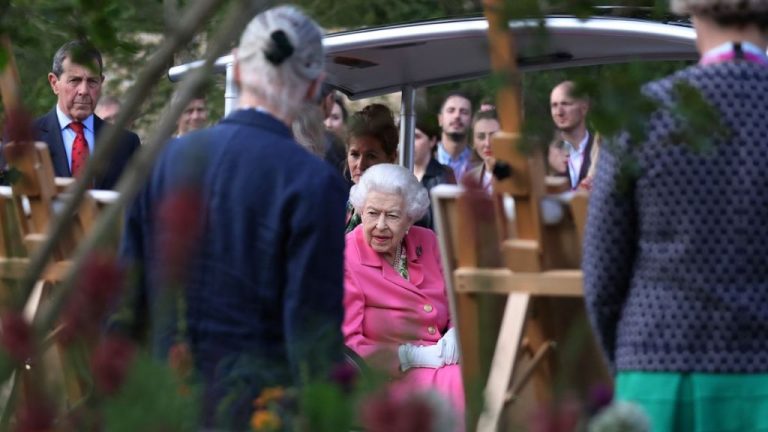What Clay Is Used For Tandoor Oven?
A tandoor oven, also known as a tandoori oven, is a cylindrical clay or metal oven used for cooking and baking. The name “tandoor” comes from the Persian word “tannur” meaning oven or fire.
Tandoor ovens originated over 3000 years ago in what is now modern day Pakistan and northwest India. They were traditionally used for baking bread and cooking meats in ancient civilizations in the region. Tandoor ovens became popularly associated with Punjabi cuisine and cooking techniques. The dish “tandoori chicken” is named after the tandoor oven in which it is prepared.
Today, tandoor ovens are commonly used in India, Pakistan, Afghanistan, Iran, Armenia, Azerbaijan, Turkey, Central Asia, the Arab world, and in Indian restaurants worldwide. The ovens allow for a method of cooking known as tandoori cooking, which involves aromatic spices and high heat from the cylindrical clay oven. Tandoori dishes like naan bread, tandoori chicken, and tandoori fish are baked by sticking them to the hot interior walls of the tandoor oven.
Clay Materials Used
The most common clay material used for constructing traditional tandoor ovens is terracotta. Terracotta clay is an ancient natural clay material composed primarily of silicate minerals. It has an earthy red-orange color when fired due to the presence of iron oxide. Terracotta has several properties that make it well-suited for tandoor oven construction:
- Withstands high temperatures – Terracotta can withstand extremely high temperatures up to 2,980°F (1,640°C) which is ideal for the direct fire cooking method used in tandoors.
- Insulating abilities – Terracotta has moderately good insulation properties which helps retain heat efficiently inside the tandoor oven.
- Dense structure – When fired, terracotta develops a dense structure perfect for containing and radiating heat evenly.
- Availability – Terracotta clay is widely available especially in regions where tandoor cooking is common such as India, Pakistan, Afghanistan and the Middle East.
Due to these beneficial properties, most traditional tandoor ovens use terracotta sourced locally near the area of manufacture. High quality terracotta clay ensures proper heat retention and structure stability when constructing the tandoor vessel.
Clay Preparation
Proper clay preparation is crucial for constructing a high-quality tandoor oven that will stand the test of time. The clay used is typically a red earthenware clay that can withstand extremely high temperatures. Before molding the clay into the oven vessel, it must first be soaked and kneaded thoroughly.
Soaking the clay in water allows it to absorb moisture and become more malleable. The clay is soaked for several hours or up to a day to ensure it is saturated. This helps make the clay smooth and pliable for shaping.
Kneading is then done to work out any air pockets in the clay. It is kneaded much like bread dough, pressing and folding repeatedly. Removing air pockets is critical, as air expands when heated and can cause cracking or explosions in the high heat of the tandoor. Thorough kneading results in a uniform consistency.
The clay is kneaded until the desired smooth, firm consistency is achieved. The potter must find the right moisture balance through soaking and kneading – not too wet or dry. With practice, an optimal clay texture is learned for constructing sturdy tandoor vessels.
Clay Vessel Construction
The clay vessel that forms the tandoor oven is carefully constructed by hand. The clay body is worked and molded until a rounded shape is formed for the bottom of the oven. The sides are then built up with coiled pieces of clay that are smoothed together to remove seams. The opening at the top is molded into a thick ring. Decorative elements may be added by hand using clay scraping tools or fingers. The finishing process involves smoothing the entire surface and removing any cracks or imperfections. The clay vessel is then left to air dry slowly to prevent cracking before being fired in a kiln.
Firing the clay at high temperatures between 1800-2000°F chemically and physically transforms and hardens the clay through sintering. The firing and cooling process must be carefully controlled to prevent the clay from cracking. Many modern tandoors use insulation around the clay vessel, so firing can be done at lower temperatures around 1000°F. After firing, the clay has been permanently hardened into the finished tandoor oven ready for use.
Insulating the Oven
Proper insulation is crucial for a tandoor oven in order to retain heat and allow the clay interior to reach and maintain high temperatures. The most common method is to line the interior with high-heat refractory bricks after the clay vessel is constructed.
Refractory bricks are made from materials like fire clay that can withstand extremely high temperatures above 1000°C without cracking or breaking down. They have low thermal conductivity, meaning they prevent heat loss by trapping it inside the oven.
The refractory bricks are tightly fitted along the interior walls, base, and ceiling of the clay tandoor. Usually multiple layers of bricks are stacked for enhanced insulation. The bricks form a protective barrier that contains the heat of the charcoal or wood fuel inside the tandoor.
With proper refractory brick insulation, the tandoor’s clay vessel can efficiently retain heat during cooking cycles. This allows the radiant heat to thoroughly cook foods placed inside on skewers or plates. The insulation helps maintain ideal cooking temperatures for baking the signature tandoori styles of chicken, breads, and other items.
Heating Element
The traditional heating element for a tandoor oven is a charcoal or wood fire at the base of the clay vessel. The fire provides the high temperatures needed to quickly cook meats and bake bread against the interior walls. Optimal burning temperatures are usually between 480°F-900°F.
Hardwoods like oak or fruit woods are commonly used as they provide a consistent and hot fire. The charcoal briquettes must be completely lit before being placed in the tandoor’s fire pit. Managing the fire involves maintaining a constant supply of fresh coals to sustain temperatures. The chef will need to regularly add new charcoal and remove ash buildup. Adjusting the airflow can also control the fire intensity.
Modern tandoors may use gas or electric heating elements instead of traditional wood/charcoal. But many chefs argue these do not provide the same flavor and cooking experience as a real wood-fired clay tandoor oven. The smoky aromas and high radiant heat are essential parts of authentic tandoori cuisine.
Usage and Maintenance
Proper usage and regular maintenance are key to getting the most out of your tandoor oven and extending its lifetime. Here are some tips on preheating, regulating temperature, cooking techniques, and cleaning/repairs.
Preheating and Regulating Temperature
Tandoor ovens need to be preheated before cooking in order to achieve the high temperatures required. Light the charcoal or wood fuel and let the oven heat up for at least 30 minutes before use. The intense heat helps create the signature tandoor flavors and cooking effects. Monitor the temperature using a thermometer placed inside the oven. Generally temperatures between 400-500°F are ideal for most tandoori cooking. Control the temperature by adjusting the ventilation and regulating the fuel. More air circulation will increase the heat.
Cooking Techniques
Use long skewers to insert food into the oven for quick cooking with the radiant heat. Meat and vegetables cooked in a tandoor are usually marinated in spiced yogurt to tenderize and add flavor. Rotate and flip skewers periodically while cooking for even exposure. The intense dry heat helps create a smoky char while keeping the interior moist. Cook times are generally short, from 2-15 minutes depending on the item. Chicken legs, fish, paneer, peppers and onions are all commonly cooked in tandoors.
Cleaning and Repairs
After each use, allow the oven to fully cool then remove any excess food bits and ash. Gently scrub the interior clay surface with a wet cloth or brush to clean. Avoid using harsh chemicals or cleaners which can damage the clay. Inspect the interior surface periodically for cracks or damage which should be repaired immediately. Reseal any cracked areas with heat-safe clay. Replace broken thermometers or skewers as needed for safe operation.
Clay vs. Other Materials
Tandoor ovens have traditionally been made from terracotta clay due to its heat retention properties and availability. However, some modern tandoor ovens use alternative materials like metal or other types of clay.
Terracotta clay has some advantages compared to other materials:
- Excellent heat retention – Terracotta has high heat capacity and slow heat transfer rate, meaning it absorbs heat from the flames and radiates it steadily over time for consistent cooking.
- Withstands high temperatures – Terracotta remains stable and does not crack under the 800-900°F cooking temperature of tandoors.
- Moisture control – The clay allows steam to escape while retaining just enough moisture for tender meats.
- Traditional material – Terracotta imparts an authentic smoky flavor and aroma to the food.
The disadvantages of terracotta include:
- Heavier weight – Terracotta tandoors are very heavy, which makes transportation difficult.
- Prone to damage – Dropping or mishandling can cause cracks in the clay.
- Requires seasoning – Must be cured repeatedly to develop a non-stick patina.
Metal tandoor ovens heat up more quickly and weigh much less, but they do not retain heat as well leading to more uneven cooking. Other clays like refined clay or fireclay can work but lack the heat properties, durability, and flavor imparted by terracotta.
For traditional tandoor cooking, terracotta remains the optimal material choice.
Notable Tandoor Potteries
Several regions around the world, especially in South Asia, have become famous for their high-quality clay tandoor ovens. The characteristics of the local clay and specialized construction techniques result in sturdy, efficient tandoors.
In Punjab, India, the town of Phillaur is renowned for its pottery and terracotta products. The region’s alluvial soil produces clay ideal for withstanding high heat. Master potters carefully wed clay coils together by hand and reinforce the ovens with straw. These tandoors reach incredibly high temperatures while minimizing heat loss.
The town of Nizamabad in Telangana, India boasts clay with high thermal conductivity. Skilled artisans shape the clay into perfectly symmetrical tandoor vessels. Nizamabad tandoors provide consistent heat distribution for making naan and tandoori chicken.
In Turkey, the city of Kütahya supplies clay tandoors across the country due to the unique properties of the local clay. It can withstand rapid temperature changes without cracking. Kütahya tandoors are often glazed for increased durability.
These iconic tandoor pottery towns demonstrate how sourcing the right materials and applying time-honored construction techniques results in exceptional ovens cherished for generations.
Future of Tandoor Ovens
Tandoor ovens have been used for centuries in India and the Middle East, but they are gaining popularity worldwide as people discover their versatility and unique cooking properties. While the traditional clay tandoor remains ubiquitous, modern innovations and technology are shaping the future of these iconic ovens.
One recent advancement is the development of portable electric tandoors. These incorporate electric heating coils and a fan to circulate hot air, allowing busy cooks to enjoy tandoori flavors at home or on the go. Electric tandoors heat up rapidly and provide user-friendly temperature controls.
Gas-fueled tandoors are also growing in popularity in commercial kitchens. They provide consistent high heat for quick cooking and tandoori char while avoiding the effort of managing a wood or charcoal fire. Gas tandoors offer flexibility and can be installed indoors or out.
Clay tandoors themselves are also evolving. While traditional techniques are still prized, some potters are experimenting with different clay mixtures and finishes to optimize heat retention. Mechanized production methods allow tandoors to be mass-produced while maintaining handcrafted quality.
As Indian, Arabic, and Mediterranean cuisines continue to expand globally, so does the allure of tandoori cooking. From hip new restaurants to backyard grilling, tandoors allow cooks to infuse food with a smoky charred flavor. Blending tradition with innovation, the tandoor oven remains a versatile fixture of contemporary cooking.



